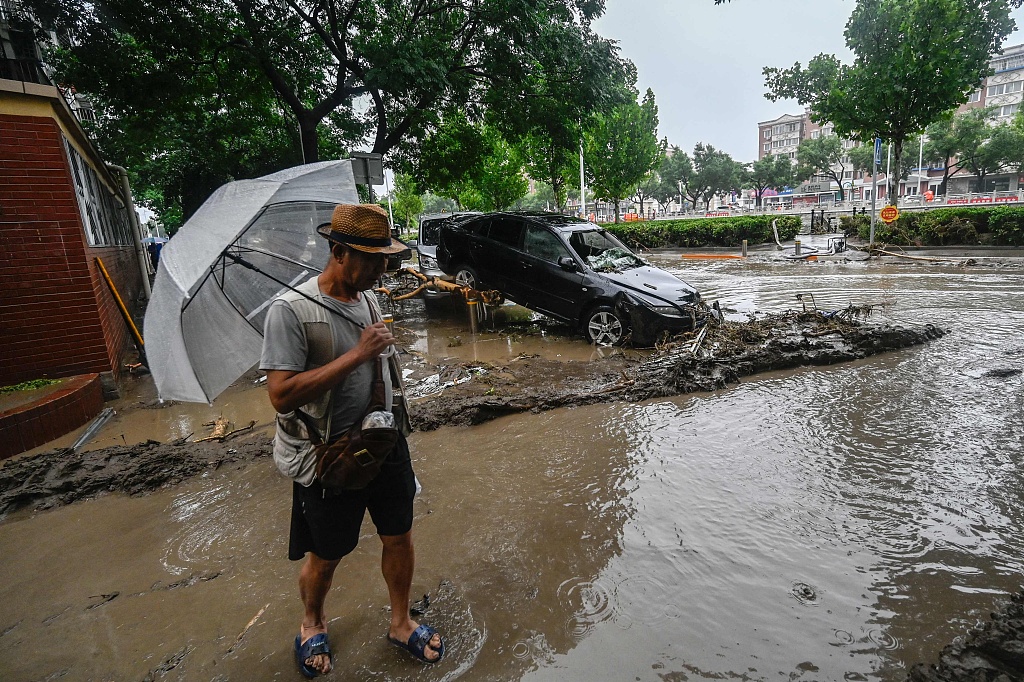Most parts of northern China show a trend of warmer and wetter climate, as well as an increase in the frequency and intensity of regional extreme precipitation events, said Gao Lu, a researcher at the School of Geographical Science of the Fujian Normal University.
Earlier this month, Typhoon Doksuri moved north and badly affected the Beijing-Tianjin-Hebei region and other provinces after it made landfall in east China's Fujian Province.
The average precipitation in Zhuozhou, Hebei Province was 355.1 millimeters from July 29 to August 1, causing massive damage to the city.
Beijing recorded the maximum precipitation of 744.8 millimeters, the highest rainfall in 140 years of instrumental records, on August 1.
Since 2000, the precipitation in Beijing has gradually increased, from an average annual precipitation of nearly 390 millimeters to about 580 millimeters now, according to the National Meteorological Center.
"In 20 years, Beijing's annual precipitation increased by nearly 200 millimeters, which is a very big change," said Gao Lu.

A man stands in the rain as Mentougou District is flooded by heavy rain, Beijing, August 1, 2023. /CFP
A man stands in the rain as Mentougou District is flooded by heavy rain, Beijing, August 1, 2023. /CFP
"Under the dual influence of global change and human activities, hydrometeorology presents a significant non-stationary feature, the frequency of extreme climatic events and extreme hydrological events will increase, and the once-in-a-thousand-year rainstorm will become more common, thus becoming once-in-a-hundred-year rainstorm. In short, climate change becomes more extreme," Gao added.
Moreover, due to global warming, especially the increase in ocean temperatures, more water vapor evaporates, which also gives tropical cyclones more energy, according to Ma Jun, the director of the Institute of Public and Environmental Affairs.
Average peak tropical cyclone wind speeds and the proportion of category 4 to 5 tropical cyclones (there are five categories, with category 1 being the weakest and Category 5 being the strongest) will very likely increase globally with warming, according to the United Nations' Intergovernmental Panel on Climate Change.
Also, average tropical cyclone rain rates will likely increase with warming, and it's likely that at the global scale, water vapor content will increase 7 percent for every 1 degree Celsius rise in temperature, leading to robust increases in precipitation extremes everywhere.
(Cover: A man drives through heavy rain in Beijing, August 20, 2023. /CFP)
(If you have specific expertise and want to contribute, or if you have a topic of interest that you'd like to share with us, please email us at nature@cgtn.com.)